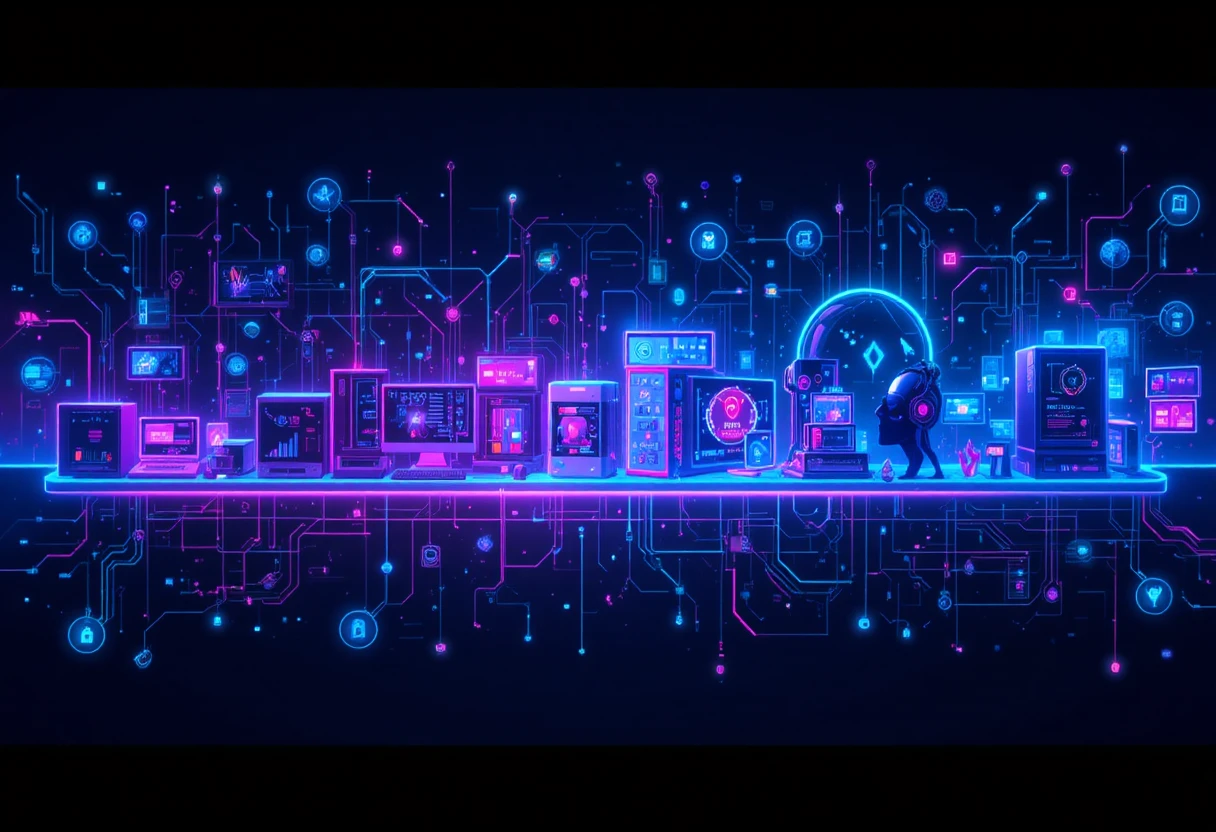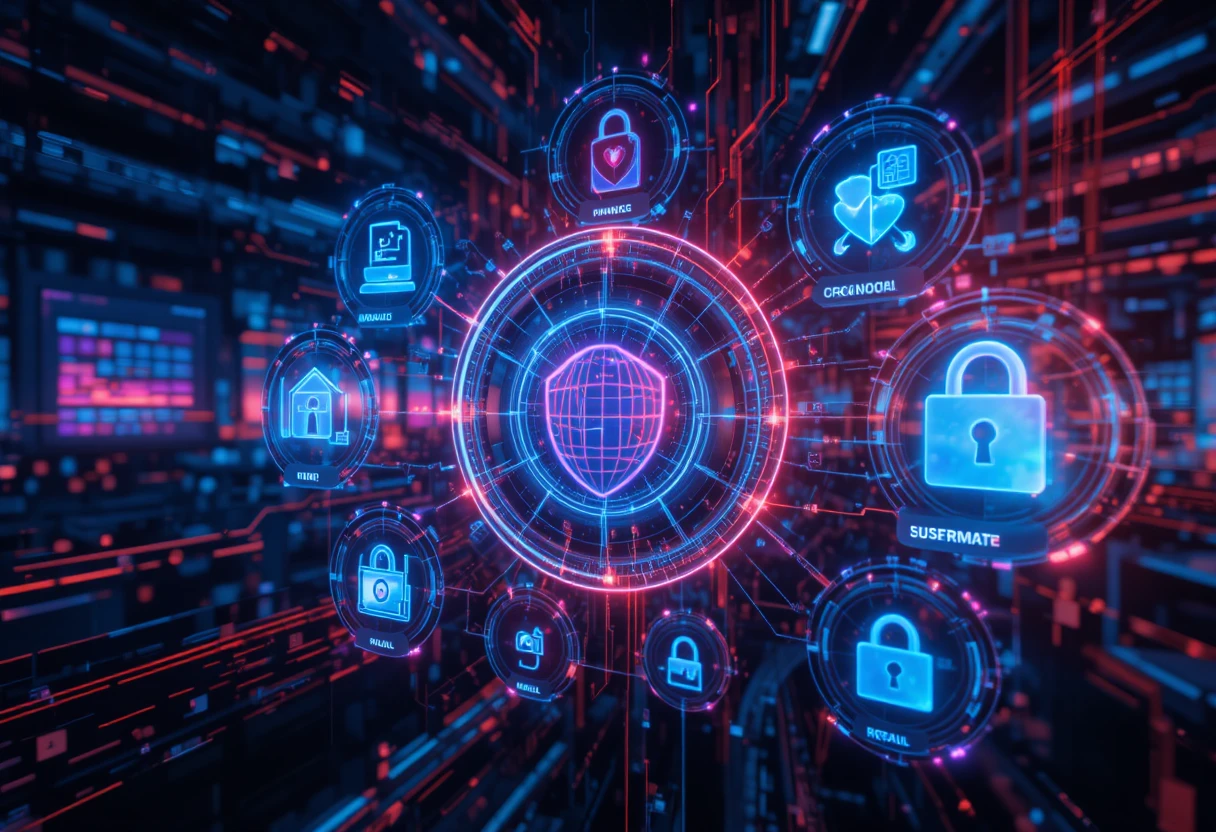Cybersecurity is the practice of protecting systems, networks, devices, and data from unauthorized access, attacks, and damage. In an increasingly connected world, where digital technologies underpin economies, governments, and daily life, cybersecurity has become a critical pillar of safety and trust. From defending against ransomware to securing sensitive personal data, cybersecurity addresses a wide range of threats in a rapidly evolving landscape. This 3000-word article explores the fundamentals, applications, challenges, and future of cybersecurity, providing a comprehensive overview of its vital role in the digital age.
What is Cybersecurity?
Cybersecurity encompasses technologies, processes, and practices designed to protect digital assets from cyber threats, including hacking, malware, phishing, and data breaches. It involves securing hardware, software, networks, and data to ensure confidentiality, integrity, and availability (CIA triad)—the core principles of cybersecurity. As cyber threats grow in sophistication, cybersecurity is essential for individuals, businesses, and governments to maintain trust and operational continuity.
A Brief History of Cybersecurity
Cybersecurity’s origins trace back to the 1970s when the first computer viruses, like the Creeper virus, emerged. The 1980s saw the rise of antivirus software and early hacking attempts. The internet’s expansion in the 1990s brought new threats, such as worms and distributed denial-of-service (DDoS) attacks, prompting advancements in firewalls and encryption.
The 2000s marked a surge in cybercrime, with high-profile breaches targeting financial institutions and governments. By the 2010s, ransomware, advanced persistent threats (APTs), and state-sponsored cyberattacks became prevalent. Today, cybersecurity leverages artificial intelligence (AI), blockchain, and quantum cryptography to combat increasingly complex threats, driven by the rise of IoT, 5G, and cloud computing.

Core Components of Cybersecurity
Cybersecurity relies on a multifaceted approach, combining technologies, strategies, and human factors to protect digital ecosystems.
Network Security
Network security protects the infrastructure that connects devices, such as routers, switches, and servers. Firewalls, intrusion detection systems (IDS), and virtual private networks (VPNs) prevent unauthorized access and monitor traffic for suspicious activity.
Endpoint Security
Endpoint security safeguards devices like laptops, smartphones, and IoT devices. Antivirus software, endpoint detection and response (EDR) tools, and device encryption protect against malware and unauthorized access.
Application Security
Application security ensures software is free from vulnerabilities. Secure coding practices, regular updates, and penetration testing prevent exploits in apps and websites.
Data Security
Data security protects sensitive information, such as personal, financial, or intellectual property data. Encryption, access controls, and data loss prevention (DLP) tools ensure data confidentiality and integrity.
Identity and Access Management (IAM)
IAM verifies user identities and controls access to systems and data. Multi-factor authentication (MFA), biometrics, and role-based access controls (RBAC) enhance security by limiting unauthorized access.
Incident Response and Recovery
Incident response plans outline steps to detect, contain, and mitigate cyber incidents. Backup systems and disaster recovery protocols ensure business continuity after attacks.
Types of Cyber Threats
Cybersecurity addresses a wide range of threats, each requiring specific defenses.
Malware
Malware, including viruses, worms, ransomware, and spyware, infects systems to steal data, disrupt operations, or demand ransoms. For example, the WannaCry ransomware attack in 2017 affected over 200,000 computers worldwide.
Phishing
Phishing attacks use fraudulent emails, texts, or websites to trick users into revealing sensitive information, such as passwords or credit card details. Spear phishing targets specific individuals with tailored attacks.
DDoS Attacks
Distributed denial-of-service (DDoS) attacks overwhelm systems with traffic, causing outages. These attacks target websites, servers, or networks to disrupt services.
Advanced Persistent Threats (APTs)
APTs are prolonged, targeted attacks by sophisticated actors, often state-sponsored, to steal sensitive data. They exploit vulnerabilities over months or years, as seen in the 2020 SolarWinds breach.
Insider Threats
Insider threats arise from employees or contractors who intentionally or unintentionally compromise security. Examples include data leaks or misconfigured systems.
Man-in-the-Middle (MitM) Attacks
MitM attacks intercept communication between two parties to steal data or manipulate transactions. For instance, attackers may exploit unsecured Wi-Fi networks to capture login credentials.
Applications of Cybersecurity
Cybersecurity is integral to protecting various sectors and enabling secure digital transformation.
Financial Services
The financial sector is a prime target for cyberattacks due to its sensitive data. Cybersecurity solutions like fraud detection systems, blockchain-based transactions, and secure payment gateways protect banks, fintechs, and customers. For example, AI-driven anomaly detection identifies suspicious transactions in real time.
Healthcare
Healthcare cybersecurity protects patient records, medical devices, and hospital systems. With the rise of IoT medical devices, encryption and network segmentation prevent breaches that could endanger lives. The 2021 ransomware attack on Ireland’s health service highlighted the need for robust defenses.
Government and Defense
Governments use cybersecurity to protect critical infrastructure, classified data, and citizen services. Cyber defenses safeguard election systems, military networks, and public utilities against state-sponsored attacks and espionage.
Retail and E-Commerce
Retailers deploy cybersecurity to secure customer data, payment systems, and supply chains. Secure sockets layer (SSL) certificates, tokenization, and fraud detection protect online transactions and build consumer trust.
Education
Educational institutions use cybersecurity to protect student data, research, and online learning platforms. With remote learning on the rise, schools implement firewalls, VPNs, and anti-phishing training to combat threats.
Critical Infrastructure
Critical infrastructure, such as power grids, water systems, and transportation, relies on cybersecurity to prevent disruptions. For instance, the 2021 Colonial Pipeline ransomware attack disrupted fuel supplies, underscoring the need for robust defenses.
Personal Cybersecurity
Individuals use cybersecurity tools like antivirus software, password managers, and VPNs to protect personal devices and data. Awareness campaigns educate users about phishing and safe online practices.

Benefits of Cybersecurity
Cybersecurity offers numerous advantages, ensuring safety, trust, and operational continuity.
Data Protection
Cybersecurity safeguards sensitive data, preventing financial losses, identity theft, and reputational damage. Encryption and access controls ensure data remains confidential and intact.
Business Continuity
Robust cybersecurity minimizes disruptions from attacks, enabling organizations to maintain operations. Incident response plans and backups ensure quick recovery.
Consumer Trust
Strong cybersecurity builds trust with customers, who expect their data to be secure. Retailers and banks with reliable security measures attract and retain customers.
Regulatory Compliance
Cybersecurity helps organizations comply with regulations like GDPR, HIPAA, and PCI-DSS, avoiding fines and legal consequences.
Innovation Enablement
Secure systems enable innovation by providing a safe environment for technologies like IoT, cloud computing, and AI. Cybersecurity ensures these advancements are not compromised.
Challenges in Cybersecurity
Despite its importance, cybersecurity faces significant challenges in a dynamic threat landscape.
Evolving Threats
Cyber threats evolve rapidly, with attackers using AI, quantum computing, and social engineering to bypass defenses. Staying ahead requires constant innovation and vigilance.
Skills Shortage
The global cybersecurity workforce gap, estimated at 4 million professionals in 2023, hinders organizations’ ability to implement effective defenses. Training and education programs are critical to address this.
Complexity of Systems
Modern IT environments, with cloud, IoT, and hybrid systems, are complex and harder to secure. Misconfigurations and unpatched vulnerabilities create entry points for attackers.
Insider Threats
Insider threats, whether malicious or accidental, are difficult to detect and prevent. Employee training and monitoring systems are essential but challenging to implement effectively.
Cost of Implementation
Cybersecurity solutions, such as advanced firewalls, EDR tools, and penetration testing, are expensive. Small businesses and developing regions may struggle to afford robust defenses.
Regulatory Fragmentation
Differing global regulations complicate compliance for multinational organizations. Harmonizing standards could streamline cybersecurity efforts but remains a challenge.
Ethical Considerations
Cybersecurity raises ethical questions that demand careful consideration to balance security and societal values.
Privacy vs. Security
Balancing user privacy with security measures, like surveillance or data collection, is a key ethical concern. Transparent policies and minimal data collection are essential to maintain trust.
Surveillance and Freedom
Government cybersecurity measures, such as mass surveillance to combat threats, can infringe on individual freedoms. Ethical frameworks must ensure accountability and proportionality.
Equity in Access
Cybersecurity solutions are often costly, creating disparities between well-funded organizations and under-resourced ones. Ensuring equitable access to security tools is critical.
Responsible Disclosure
When vulnerabilities are discovered, ethical hackers face dilemmas about disclosing them to vendors or the public. Responsible disclosure policies aim to balance security and transparency.

The Future of Cybersecurity
The future of cybersecurity is shaped by emerging technologies, evolving threats, and societal needs.
AI and Machine Learning
AI and machine learning enhance cybersecurity by detecting anomalies, predicting threats, and automating responses. For example, AI-driven systems can identify phishing emails with high accuracy.
Quantum Cybersecurity
Quantum computing threatens current encryption methods but also enables quantum cryptography, such as quantum key distribution (QKD), which offers unhackable communication.
Zero Trust Architecture
Zero trust, a model that assumes no user or device is inherently trustworthy, is gaining traction. It requires continuous verification, reducing risks from insider threats and breaches.
Blockchain for Security
Blockchain’s decentralized, tamper-resistant nature enhances cybersecurity in applications like secure identity management, data integrity, and supply chain verification.
5G and IoT Security
The rise of 5G and IoT increases the attack surface, requiring advanced security for billions of connected devices. Edge computing and secure protocols will be critical.
Cybersecurity Automation
Automation streamlines threat detection, response, and patching, addressing the skills shortage. Security orchestration, automation, and response (SOAR) platforms are leading this trend.
Cyber Resilience
Future cybersecurity will focus on resilience—designing systems to withstand and recover from attacks. This includes robust backups, incident response plans, and adaptive defenses.
Conclusion
Cybersecurity is a cornerstone of the digital age, protecting systems, data, and users from an ever-evolving array of threats. Its applications in finance, healthcare, government, and beyond demonstrate its critical role in enabling trust and innovation. However, challenges like evolving threats, skills shortages, and ethical concerns must be addressed to ensure a secure digital future. As technologies like AI, quantum computing, and blockchain reshape cybersecurity, collaboration between organizations, governments, and individuals will be essential to build resilient, equitable, and ethical defenses. By staying proactive and adaptive, cybersecurity can safeguard the digital world for generations to come.
